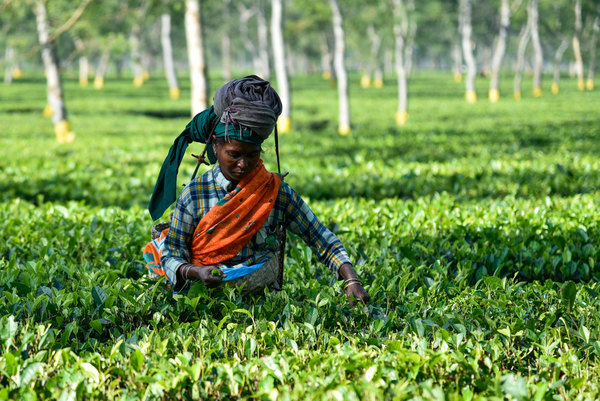Is ‘more efficient’ food production a threat to animal welfare?
Ahead of the upcoming Biodiversity Institute Conference, Marian Stamp Dawkins, Professor of Animal Behaviour at the University of Oxford, highlights the pioneering work of two women who spoke out about the negative effects on animals of greater efficiency in food production. ‘Greater efficiency’ may for some people be an obvious goal for producing sustainable food…
What is happening in this year’s Climate Week: 4-10 March 2013?
This week is Climate Week (CW), a campaign which started in Great Britain, in March 2011, when the first CW resulted in 3000 events, which were attended by half a million people, making it probably Britain’s biggest ever environmental occasion. This year, 3226 events were registered in the Climate Week web page, ranging from events…
Looking to the trees of the future
Image courtesy of the Future Trees Trust Whilst carrying out research for his latest book, Dr Peter Savill looked to the future of forestry in Britain and the challenges it faces. One of the most immediate problems, widely discussed in the industry and in the media, is that of the recently introduced fungus Chalara fraxinea,…
Schmallenberg – the impact of the virus hitting UK farms
Schmallenberg virus was first reported in in cattle the summer of 2011 near the town in Northern Germany that gives it its name. Since then, the spread of the virus has been rapid. In the UK, it was first reported on 11 farms in January 2012, and has grown month-on-month since then. It is spread…
Chocolate Made in South Africa for homesick Brits?
This blog is about the weirdness of global trade… and the lengths (literally) we go for chocolate. The wrapper on my Marks & Spencer (M&S) valentine chocolates read: “Made with our exclusive British Milk chocolate recipe, Made in South Africa”. Incredibly, it seemed that a firm in South Africa (SA) was targeting local people with…
“Demitarianism” to reduce meat consumption and environmental pressures
In a world where the population is growing, water and nutrient resources are becoming scarse, where meat products includes more than it says in the label, shouldn't we become vegetarians or at least demitarians by cutting the amount of meat we eat by half?
Ash dieback – where are we now?
Image courtesy of Fera The spread of ash dieback in the UK hit the headlines last year bringing the issues of forest health to the fore (see Ash dieback hits British countryside. But what is the current status of the disease? Much has been done since outbreak, a helpline has been set up and The…
How alien species cost Europe €12bn a year
A report from the European Environment Agency (EEA) sets out the staggering cost of alien species – animals and plants brought to Europe from other parts of the world. The cost, and the threat to health and the environment, is said to be greater than expected, costing at least €12bn (£10bn) a year. More than…
Measuring up? Analysing aid and international development at OxFID 2013
By Daniel O'Hara Return On Investment. To many that phrase brings to mind the corporate sector, with its insistence on low costs and high profits. Far fewer people would think of ROI in relation to international development – its focus on getting the best value for money perhaps seems at odds with development’s aims of…
Cats versus dogs… and an insight for Oxford pet owners!
Idolised in Ancient Egypt, then vilified in Medieval Europe, the domestication of cats has taken them on an interesting route from uninvited guests chasing mice in our grain stores to the moggies we cuddle today. At John Bradshaw’s talk at Blackwell’s in Oxford last month, evidence of their interesting history was just around the corner…


